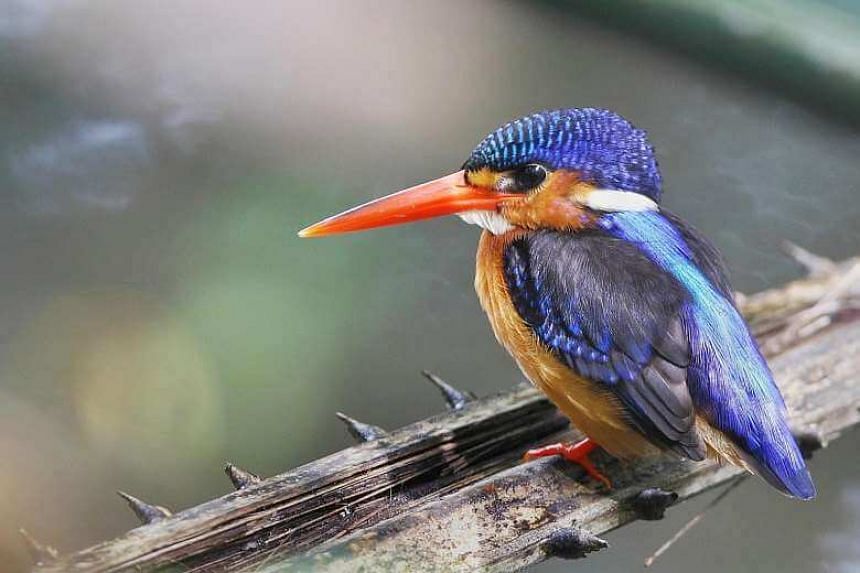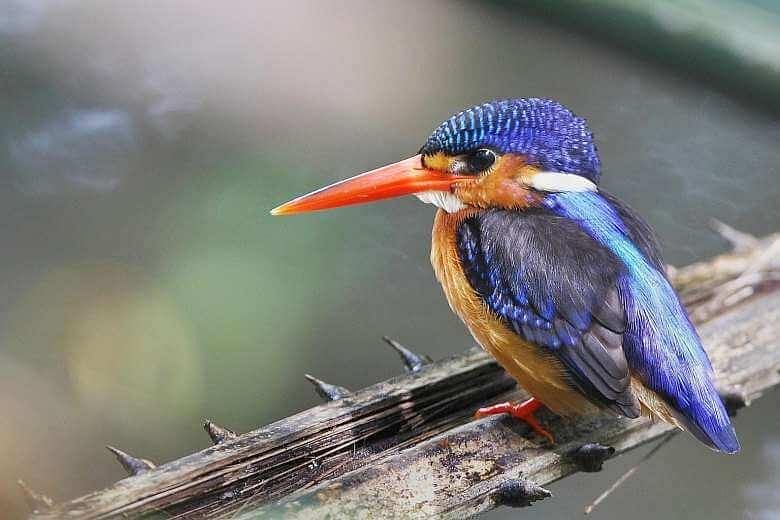Each year, more than 2,000 Arctic migratory birds from more than 30 species make "winter holiday visits" to Sungei Buloh Wetland Reserve, using Singapore as a stop- over point to feed and rest before continuing their arduous journey as far north as the Arctic Circle.
Over the years, 254 bird species have visited the 130ha wetland.
More than 120 are migratory species; 34 nest in the Arctic region.
Many of these species are threatened by either declining numbers or have an unknown status due to a lack of monitoring data, noted the National Parks Board (NParks).
But the silver lining is that species of shorebirds such as whimbrel and common redshank have maintained stable populations in Sungei Buloh.
NParks prepares the wetland for its avian visitors before each migratory season by clearing overgrown vegetation on raised embankments because migratory shorebirds prefer to roost on higher ground, for instance. It has also been conducting long-term monitoring of the birds.
Earlier this month, NParks said it will start a two-year project to track, via satellite, 22 migratory birds. This will involve collecting data on travel times, stopovers and breeding patterns.
The shorebirds being tracked include whimbrels, bar-tailed godwits, common greenshanks and grey plovers.
The hope is that the data collected will provide insight on major stopovers, for example, and guide bird conservation projects in these areas.
Meet Kranji Marshes' feathered residents
While it is just a stopover for many birds, Singapore also has its own avian permanent residents.
The Kranji Marshes, a 56.8ha freshwater marshland near Sungei Buloh, is home to more than 170 bird species. Here are three of the marshland's signature species.
BLUE-EARED KINGFISHER

The blue-eared kingfisher is a solitary and shy bird, which has eyes specially developed to see clearly both in the air and when diving underwater.
It is a rare resident and nationally endangered.
BAYA WEAVER

Another uncommon bird, the baya weaver, is found in grasslands and scrubs near fresh water.
The male sings and performs on unfinished nests to attract females.
Once the birds pair up, they complete the nest by adding an egg chamber and entrance tunnel.
BLUE-THROATED BEE-EATER

The blue-throated bee-eater feeds in the morning on insects, using a long bill which protects it from being stung.
It is a common resident and lives in mangroves, woodlands and open scrub areas.
Frequent fliers that holiday here in winter and summer
WHIMBREL

The whimbrel is found along coasts all over the world. It breeds in central and east Siberia and winters in south China, South-east Asia and Australasia.
It is one of Singapore's most common avian visitors, with a peak population of 450 in Sungei Buloh.
Globally, its population is 2.3 million. One of its distinct features is a downward-curving bill - about twice the length of its head.
BAR-TAILED GODWIT

The bar-tailed godwit has a long and slightly upturned bill that is black at the tip. The species' breeding range stretches from Scandinavia to Russia and Alaska. While it has a global population of 1.2 million, it is an uncommon winter visitor to Singapore, with a peak population in Sungei Buloh of just 10.
COMMON REDSHANK

A familiar winter visitor, the common redshank is usually found in Sungei Buloh between August and April, with some birds arriving as early as July.
It has a stout bill that is relatively long and long legs. The East Asian-Australasian population breeds in Mongolia and the far eastern parts of Russia and China.
It has a global population of 2.6 million and a peak population of 1,000 in Sungei Buloh.






